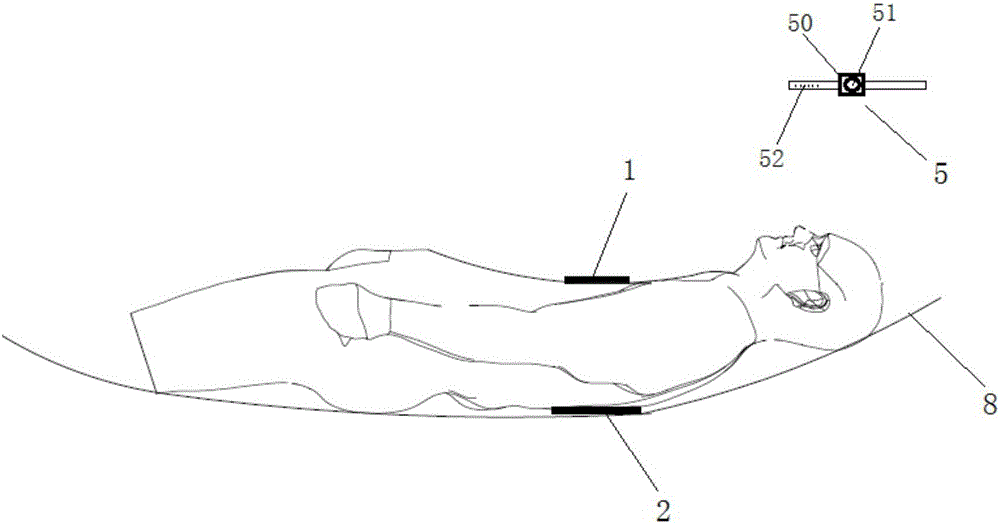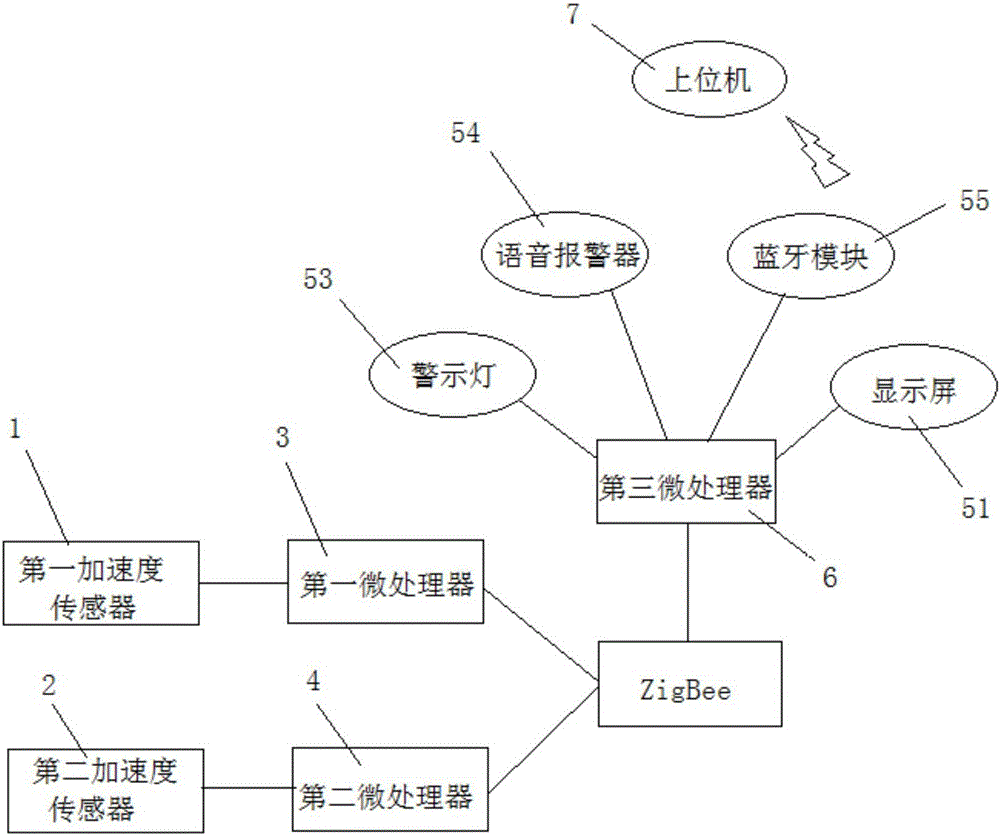Cardio-pulmonary resuscitation pressing depth indicating system with double sensors
A cardiopulmonary resuscitation and depth indication technology, applied in the field of medical first aid, can solve the problems of less than 5 cm, affect the rescue effect, and require high physical fitness, and achieve the effect of accurate compression depth, improved emergency treatment and efficiency, and reliable data guarantee
- Summary
- Abstract
- Description
- Claims
- Application Information
AI Technical Summary
Problems solved by technology
Method used
Image
Examples
Embodiment Construction
[0026] see Figure 1-3 , a dual-sensor cardiopulmonary resuscitation compression depth indicating system, which includes a first acceleration sensor 1 arranged at the chest compression point of a human body and a second acceleration sensor 2 arranged at a position facing the chest compression point on the back of the human body, said Both the first acceleration sensor 1 and the second acceleration sensor 2 are three-axis acceleration sensors to improve the accuracy of the induced displacement, and the first acceleration sensor 1 transmits the value sensed to the first microprocessor 3 to calculate the first acceleration sensor 3 A pressing displacement value, the second acceleration sensor 2 transmits the value sensed by it to the second microprocessor 4 to calculate the second pressing displacement value (from Figure 1 to Figure 2 It can be seen that the soft pad 8 is deformed downward by a certain amount although the pressing operation), the first pressing displacement valu...
PUM
 Login to View More
Login to View More Abstract
Description
Claims
Application Information
 Login to View More
Login to View More - R&D
- Intellectual Property
- Life Sciences
- Materials
- Tech Scout
- Unparalleled Data Quality
- Higher Quality Content
- 60% Fewer Hallucinations
Browse by: Latest US Patents, China's latest patents, Technical Efficacy Thesaurus, Application Domain, Technology Topic, Popular Technical Reports.
© 2025 PatSnap. All rights reserved.Legal|Privacy policy|Modern Slavery Act Transparency Statement|Sitemap|About US| Contact US: help@patsnap.com



